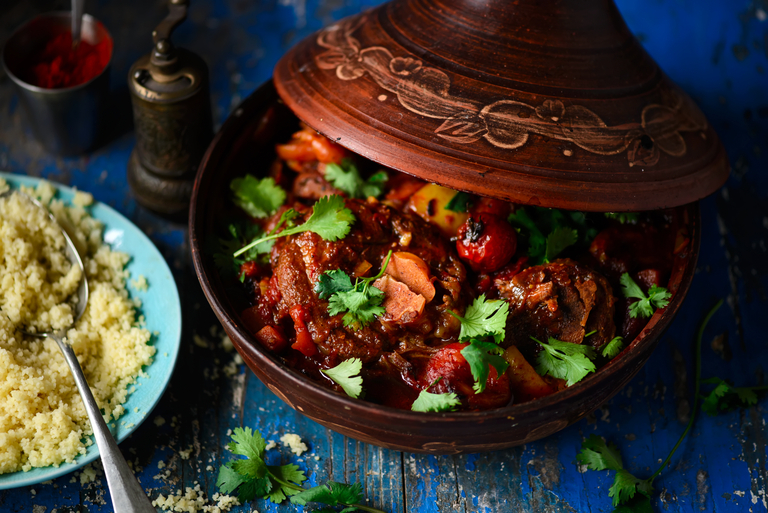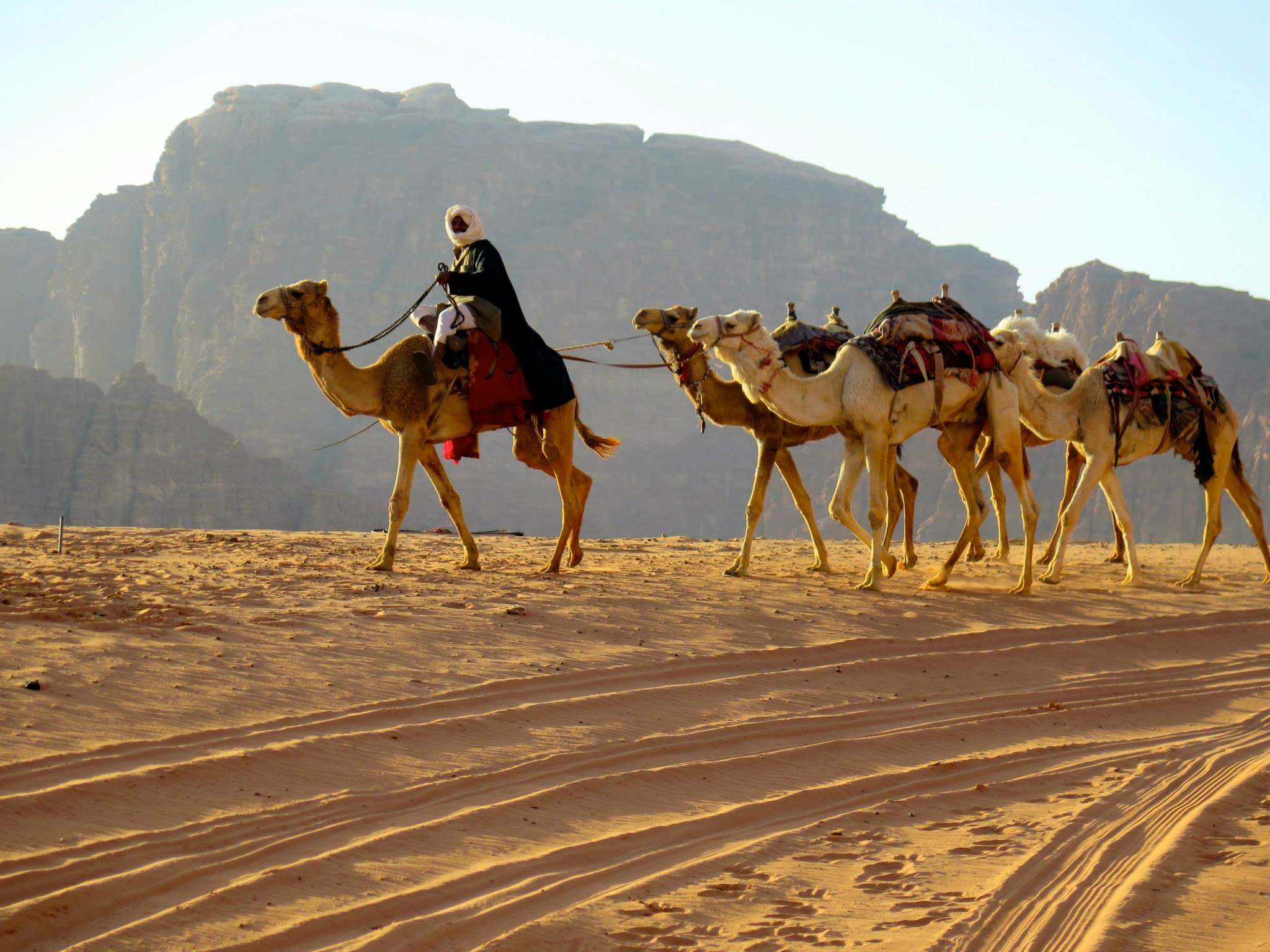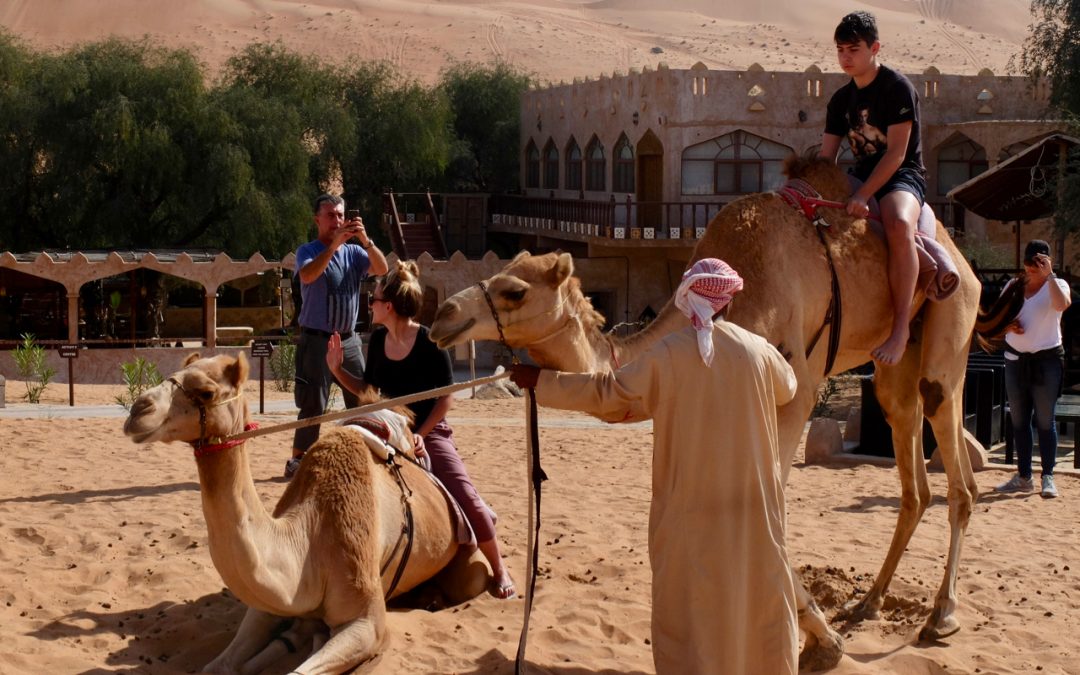The Nomadic Life: A Closer Look at Bedouin Culture

The Bedouin Culture: A Nomadic Way of Life
The Bedouin Culture: For centuries, the Bedouin people have embraced a nomadic way of life, living in harmony with the vast deserts of the Middle East. Bedouins are traditionally nomadic Arab tribes that have thrived in regions such as Saudi Arabia, Jordan, and Egypt. Their culture revolves around desert survival, camel herding, and hospitality. Despite the fast-paced changes in the modern world, the Bedouin way of life continues to endure, offering a unique and fascinating glimpse into their rich heritage.
Understanding Bedouin Heritage and Traditions
Bedouin Heritage: The Bedouins have a strong sense of community and deeply rooted ancestral connections. They emphasise honour, valuing loyalty, hospitality, and respect for the elderly. These values form the foundation of their society and have been passed down through generations.
Traditional Bedouin Practices: Bedouins have developed ingenious survival techniques in harsh desert environments. They have extensive knowledge of desert flora and fauna, making them skilled herbalists and expert trackers. Traditional Bedouin clothing, such as the keffiyeh (a headdress) and the thobe (a loose garment), reflects their adaptation to the desert climate.
Bedouin Hospitality: Known for their warm hospitality, Bedouins welcome visitors with open arms. This hospitality stems from their reliance on kinship ties and the need to support one another in the harsh desert environment. A guest in a Bedouin camp can expect to be treated to traditional cuisine, music, and lively storytelling.
Here's a table highlighting some key aspects of Bedouin culture:
| Aspect | Bedouin Culture |
|---|---|
| Lifestyle | Nomadic |
| Location | Middle East |
| Values | Honor, Loyalty, Hospitality |
| Survival Skills | Desert survival, Herbalism, Tracking |
| Traditional Clothing | Keffiyeh, Thobe |
| Hospitality | Warm and Welcoming |
The Bedouin culture offers a unique perspective on the world, characterized by resilience, adaptability, and profound respect for nature. Their fascinating heritage and traditions continue to captivate travellers seeking an authentic experience. Whether exploring desert landscapes, savouring traditional cuisine, or engaging in lively discussions, immersing oneself in Bedouin culture is an enriching endeavour.

Bedouin Nomadic Lifestyle
The Bedouin nomadic lifestyle is a fascinating aspect of Arab culture that continues to thrive in certain regions. The Bedouins are traditionally nomadic desert-dwelling people who have adapted to constant movement and survival in arid environments. In this blog section, we will examine the essentials of the Bedouin nomadic lifestyle and their unique settlements.
The Essentials of Bedouin Nomadic Lifestyle
The Bedouin lifestyle is centred around self-sufficiency, hospitality, and solidarity within the community. Here are some key aspects of the Bedouin nomadic lifestyle:
-
Mobility: Bedouins are constantly on the move, following the seasons and searching for better grazing areas for their livestock. They rely on their camels, known as the "ships of the desert," for transportation and trade.
-
Pastoralism: Livestock rearing is a crucial part of Bedouin life. They primarily raise camels, goats, and sheep, which provide them with food, milk, and fibre for clothing and tents.
-
Tribal Organization: Bedouin society is traditionally organized into tribes, further divided into smaller family units. Each tribe is led by a sheikh responsible for maintaining order and resolving conflicts within the community.
-
Hospitality: Bedouins are renowned for their hospitality. It is considered a sacred duty to offer food, shelter, and protection to travellers, even if they are from rival tribes. This tradition stems from the harsh desert environment where anyone could find themselves in need of assistance.
Nomadic Settlements: Tents and Campsites
Bedouins create temporary settlements known as campsites or encampments. These campsites are traditional tents made from goat hair and woven wool. The most common type of tent is called a "bait al-sha'ar" or "house of hair." These tents are designed to withstand intense desert winds and provide adequate shelter for the inhabitants.
Here's a table to summarize the essentials of the Bedouin nomadic lifestyle and their settlements:
| Aspect | Bedouin Nomadic Lifestyle | Nomadic Settlements |
|---|---|---|
| Mobility | Constantly on the move, following the seasons and searching for better grazing areas for their livestock | Temporary settlements or campsites |
| Pastoralism | Primarily raise camels, goats, and sheep for food, milk, and fiber | Traditional tents made from goat hair and woven wool |
| Tribal Organization | Organized into tribes, led by a sheikh, responsible for maintaining order within the community | Provides food, shelter, and protection to travelers |
| Hospitality | Renowned for their hospitality, offering assistance even to travelers from rival tribes | Designed to withstand desert winds and provide adequate shelter |
The Bedouin nomadic lifestyle is rich in traditions and resilience. Despite facing the challenges of modernization and urbanization, some Bedouin communities continue to preserve their cultural heritage and live nomadic life. By embracing this way of life, they maintain a deep connection to their ancestral roots and the deserts they call home.

Bedouin Cuisine
Take a journey into the desert's heart and experience the Bedouin people's rich and flavorful cuisine. Known for their nomadic lifestyle and deep connection to the land, the Bedouins have developed a culinary tradition that reflects their resourceful and ingenious ways of life. This blog section will explore the traditional dishes, culinary techniques, and popular ingredients that makeup Bedouin cuisine.
Exploring Bedouin Cuisine: Traditional Dishes and Culinary Techniques
Bedouin cuisine is deeply influenced by the harsh desert environment and the need for simple yet nourishing meals that can be prepared with limited resources. One of the most iconic dishes is zarb, a Bedouin-style barbecue. Zarb buries meat, usually lamb or chicken, vegetables and rice in a pit filled with hot coals. The combination of slow cooking and the earthy flavours of the desert produce succulent and tender meat infused with smoky goodness.
Another staple in Bedouin cuisine is mansaf, a celebratory dish that highlights the importance of hospitality in Bedouin culture. Mansaf consists of tender lamb or chicken cooked in a rich yoghurt sauce, served over a bed of saffron-infused rice, and topped with nuts, parsley, and sometimes dried fruits. The dish is traditionally eaten communally, where everyone gathers around a large tray and uses their hands to enjoy the flavorful feast.
Popular Ingredients in Bedouin Cooking
Bedouin cuisine relies on simple, locally available ingredients that withstand harsh desert conditions. Here are some of the popular ingredients frequently used in Bedouin cooking:
-
Lamb: Lamb is a central protein source in Bedouin cuisine, and it is featured in many dishes, such as zarb and mansaf. The meat is prized for its tenderness and rich, distinctive flavour.
-
Rice: Rice is a staple in Bedouin cooking and is often flavoured with spices, such as saffron or cinnamon, to add depth of flavour to dishes like mansaf.
-
Yoghurt: Yogurt plays a vital role in Bedouin cuisine as a base for sauces and marinades and a refreshing accompaniment to many dishes. It adds a creamy and tangy element to the overall flavour profile.
-
Spices: Bedouin cuisine embraces the use of spices to enhance the taste of their dishes. Common spices include cumin, coriander, cardamom, and turmeric, which add warmth and complexity to the flavours.
-
Dates: Dates are a cherished fruit in Bedouin culture, symbolizing abundance and hospitality. They are used in sweet and savoury dishes and provide a delightful sweetness and chewiness to various recipes.
The Bedouin cuisine reflects the Bedouin way of life, embodying resourcefulness, community, and a deep bond with their surroundings. By savouring these traditional dishes and exploring their culinary techniques, you embark on a culinary adventure that unveils the essence of Bedouin culture and their nomadic way of life.

Bedouin Hospitality
In the vast expanse of the Arabian Desert, the Bedouin people have thrived for centuries, living a nomadic lifestyle deeply rooted in tradition and hospitality. Their culture is shaped by their unique way of life, where survival in a harsh desert environment depends on solidarity and mutual support. In this blog section, we will take a closer look at Bedouin culture and explore their remarkable traditions of hospitality.
The Art of Bedouin Hospitality: Welcoming Guests and Sharing Community
Bedouin hospitality is renowned worldwide for its warmth and generosity. When guests arrive at a Bedouin camp, they are greeted with open arms and treated like family. In the desert, where resources are scarce, the Bedouins understand the importance of caring for one another. They believe sharing their little will bring blessings and good fortune.
When guests arrive, they are offered a traditional Bedouin coffee called "gahwa," prepared with cardamom and a hint of saffron. This gesture symbolizes welcome and demonstrates the Bedouin's desire to make their guests feel at ease. Along with the coffee, dates are served, representing sustenance and nourishment in an arid environment.
During their time with the Bedouin, guests are encouraged to immerse themselves in the community's daily activities. They are welcome to participate in milking camels, tending to flocks, or preparing food. This involvement allows guests to experience firsthand the Bedouin people's rich traditions and age-old practices.
Customs and Etiquette in Bedouin Culture
Bedouin culture places great importance on customs and etiquette. Respect for others, especially elders, is deeply ingrained in their values. The Bedouins believe that showing honour and deference to others strengthens the bonds of their community and ensures harmony.
It is customary for a Bedouin to stand when an elder or guest enters the room. This act of respect is a way of acknowledging their presence and significance. The Bedouins also have a strong sense of personal space, and touching someone without their permission is considered impolite.
In Bedouin culture, sharing food is a fundamental aspect of community life. When a meal is served, guests are offered the choicest portions as a gesture of hospitality. Eating with the right hand is customary, as the left hand is considered unclean. Additionally, accepting food and drink when offered is polite, even if you are not particularly hungry or thirsty.
Throughout the ages, the Bedouin people have forged a unique way of life centered around their deep sense of hospitality and mutual support. Their customs and traditions have preserved a rich cultural heritage that thrives despite the fast-paced modern world. A visit to a Bedouin camp is a remarkable experience that allows guests to witness the beauty of simplicity and genuine human connection.

Bedouin Arts and Crafts
Discover the rich cultural heritage of the Bedouin nomads through their arts and crafts. The Bedouin people, known for their nomadic lifestyle, have a long-standing tradition of creating beautiful handmade items that reflect their unique way of life. From weaving to jewellery making, their crafts are visually stunning and hold deep cultural significance. Let's take a closer look at traditional Bedouin crafts and the stories they tell.
From Weaving to Jewelry Making: Traditional Bedouin Crafts
Weaving: Weaving is one of the oldest and most revered Bedouin crafts. The women of the tribe are skilled weavers, using traditional handlooms to create intricate textiles. These textiles are often adorned with colourful patterns and geometric designs. One of the most famous woven items is the "Sadu" rug, made using sheep's wool and camel hair. The patterns on the rug often represent important aspects of Bedouin life, such as flora, fauna, and tribal symbols.
Jewellery Making: Bedouin jewellery is known for its exquisite craftsmanship and intricate designs. The jewellery is often made using silver or gold and embellished with semi-precious stones or glass beads. Each piece of jewellery is handmade, showcasing the artisan's skill. Bedouin jewellery is not merely decorative but also serves as a form of identity and status within the community.
The Significance and Symbolism Behind Bedouin Artistry
Bedouin artistry goes beyond aesthetics. Each craft has a deeper meaning and symbolism, reflecting their nomadic lifestyle and cultural heritage. For example:
Sadu Weaving: The patterns on Sadu rugs traditionally tell stories of the Bedouin's connection to the natural world and their tribal identity. The geometric shapes and motifs represent the interplay between the earth, the sky, and the universe. Many of these designs are passed down through generations, preserving the history and traditions of the Bedouin people.
Jewellery: Bedouin jewellery often incorporates protection, fertility, and good fortune symbols. Using specific gemstones or charms is believed to bring luck and ward off evil spirits. The jewellery serves as a way for the Bedouin people to express their spirituality and connect with their ancestors.
By exploring and appreciating Bedouin arts and crafts, we can better understand their culture and way of life. These handmade treasures are beautiful to behold and carry the stories and traditions of a nomadic people. Whether it's a woven rug or a piece of intricately crafted jewellery, each item reflects the rich history and heritage of the Bedouin nomads.

Bedouin Traditions and Celebrations
The Bedouin culture is rich in traditions and celebrations passed down through generations. The Bedouins, or Bedu, are a nomadic Arab community known for their steadfast and independent way of life. Let's take a closer look at some of the unique festivals, celebrations, rituals, and ceremonies that are integral to Bedouin culture.
Unique Festivals and Celebrations in Bedouin Culture
Eid Al-Fitr: One of the most significant festivals in Bedouin culture is Eid Al-Fitr, which marks the end of Ramadan. This three-day celebration is a time for the Bedouins to come together, feast, and express gratitude. Traditional dishes like Mansaf, a rice and lamb dish, are enjoyed during this festive occasion.
Wedding Celebrations: Weddings hold a special place in Bedouin culture and are celebrated enthusiastically. The wedding ceremonies often last for several days and involve traditional customs, music, and dancing. Henna ceremonies, where the bride's hands and feet are adorned with intricate henna designs, are also essential to Bedouin wedding celebrations.
Important Rituals and Ceremonies
Tribal Gatherings: Bedouin tribes regularly discuss important matters and make decisions collectively. These gatherings strengthen the sense of community and allow the Bedouins to connect with their roots and ancestral heritage.
Camel Racing: The Bedouins have a deep affinity for camels, and camel racing is a popular sport in their culture. These races are not only a display of skill and agility but also a reflection of the Bedouins' close connection to their desert environment.
Here's a table summarizing some of the unique festivals, celebrations, rituals, and ceremonies in Bedouin culture:
| Occasion | Bedouin Celebration |
|---|---|
| Eid Al-Fitr | Feast and gratitude |
| Wedding Celebrations | Traditional customs, music, dancing, and henna ceremonies |
| Tribal Gatherings | Community discussions and decision-making |
| Camel Racing | Popular sport showcasing skill and connection with the desert |
These festivals and rituals play a significant role in preserving Bedouin culture and strengthening the bonds within the community. The Bedouins' nomadic lifestyle has allowed them to develop their unique customs and traditions, which continue to be cherished and celebrated today. Understanding and appreciating the Bedouin culture gives us a glimpse into their way of life and the values they hold dear.

Challenges and Preservations
The rich and ancient culture of the Bedouin people is a fascinating subject that offers a glimpse into a nomadic way of life. However, in today's rapidly changing world, Bedouin culture faces various challenges threatening its preservation. This blog section will take a closer look at the modern influences and challenges Bedouin culture faces, as well as the efforts made to preserve this unique heritage.
Modern Influences and Challenges Faced by Bedouin Culture
The Bedouin people have traditionally lived a nomadic lifestyle, moving across vast deserts in search of water and pasture for their livestock. However, modernization, urbanization, and the influx of globalization have significantly impacted Bedouin culture. The sedentary life and economic opportunities offered by urban areas have led to a gradual decline in Bedouin nomads, as many choose to settle in cities and towns.
Moreover, the encroachment of modern infrastructure and development into Bedouin territories has created challenges for their traditional way of life. Large-scale agriculture, industrialization, and tourism have encroached on Bedouin lands, affecting their access to grazing areas and natural resources. This has disrupted their age-old sustenance patterns and threatened the preservation of their unique cultural practices.
Efforts to Preserve Bedouin Heritage
Despite the challenges, commendable efforts are being made to preserve Bedouin heritage and ensure its survival for future generations. Local organizations, scholars, and individuals are working tirelessly to document and record the Bedouin people's oral history, traditional skills, and customs.
Education programs have been established to teach younger generations about their cultural heritage and instil pride and belonging. Museums and cultural centres have also been set up to showcase artefacts, clothing, and artefacts related to Bedouin culture, allowing visitors to understand their way of life better.
Furthermore, ecotourism initiatives are being developed in Bedouin communities, allowing visitors to experience and learn about their customs firsthand. This not only supports the local economy but also helps raise awareness about Bedouin culture's challenges and the need for its preservation.
Through these collective efforts, there is hope that Bedouin culture will not only survive but also thrive in the face of modern challenges. The preservation and promotion of Bedouin heritage not only enriches our understanding of human diversity but also highlights the importance of safeguarding the cultural tapestry of our world.
The challenges faced by Bedouin culture in the modern world are significant. However, the dedication and efforts to preserve this unique heritage are commendable. By recognizing the value of Bedouin culture and supporting initiatives that aim to preserve it, we can contribute to the continued existence of this ancient way of life for generations to come.
